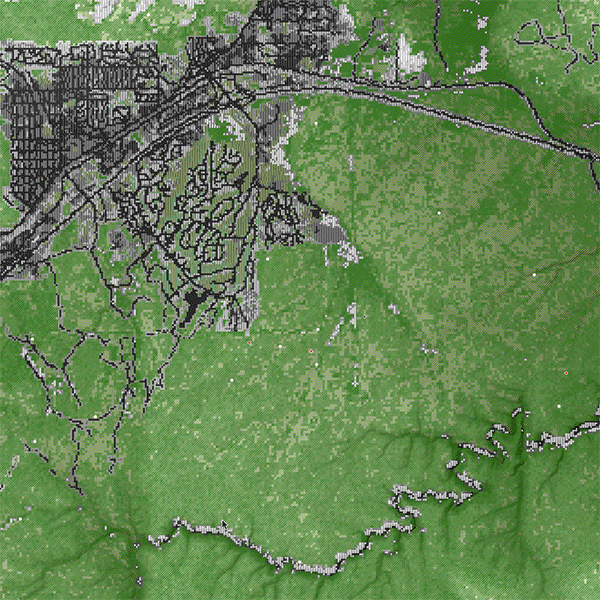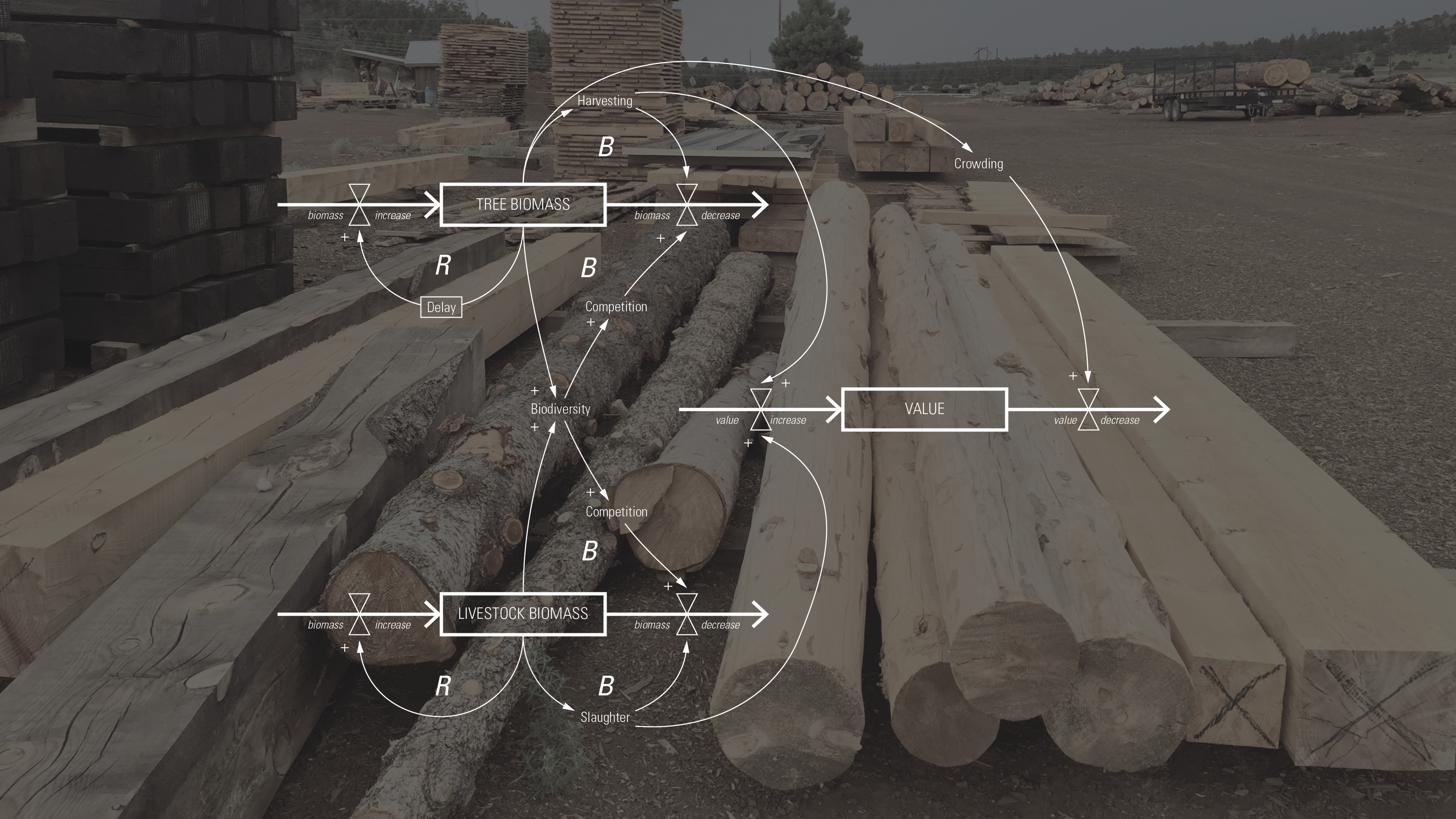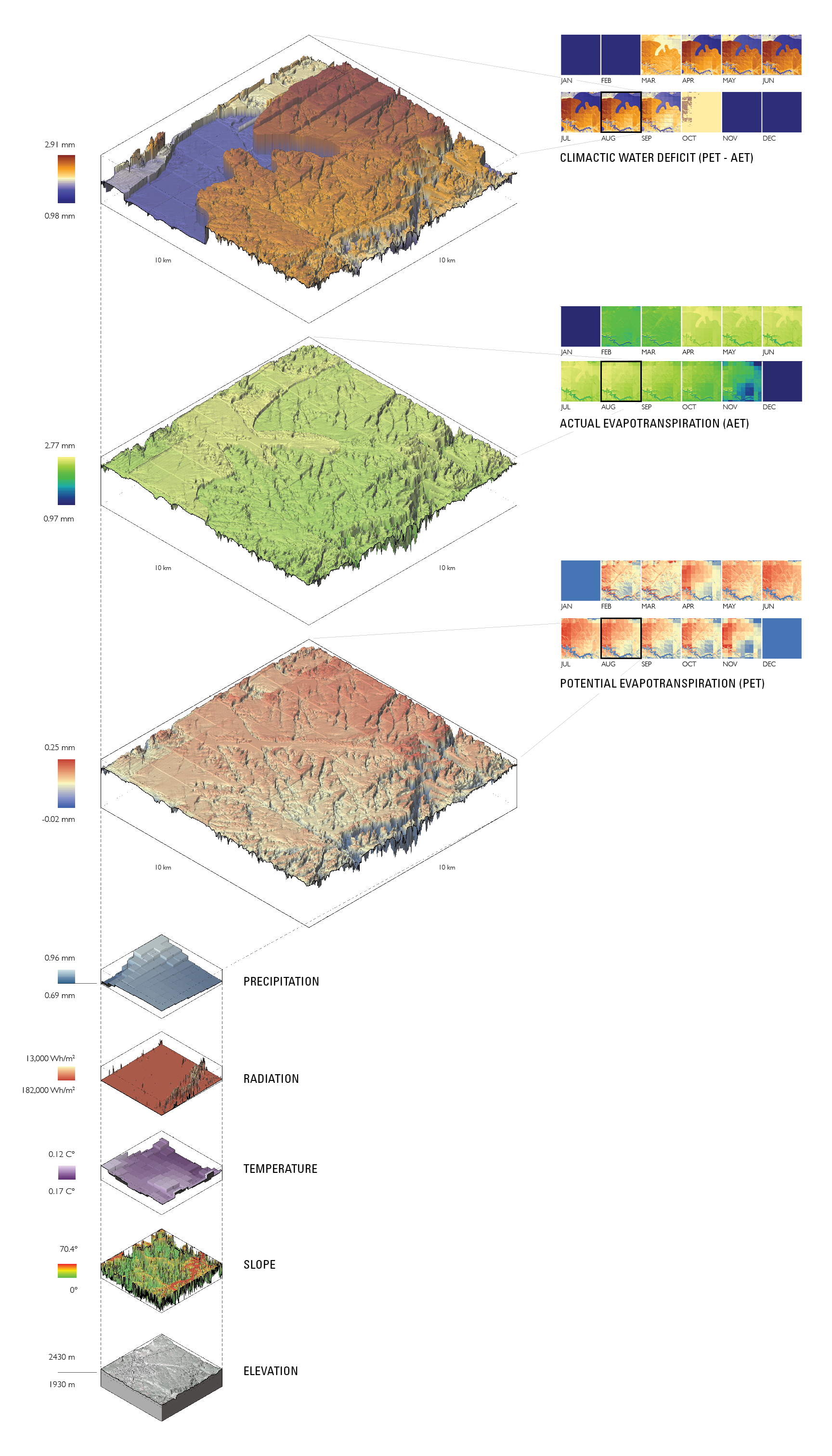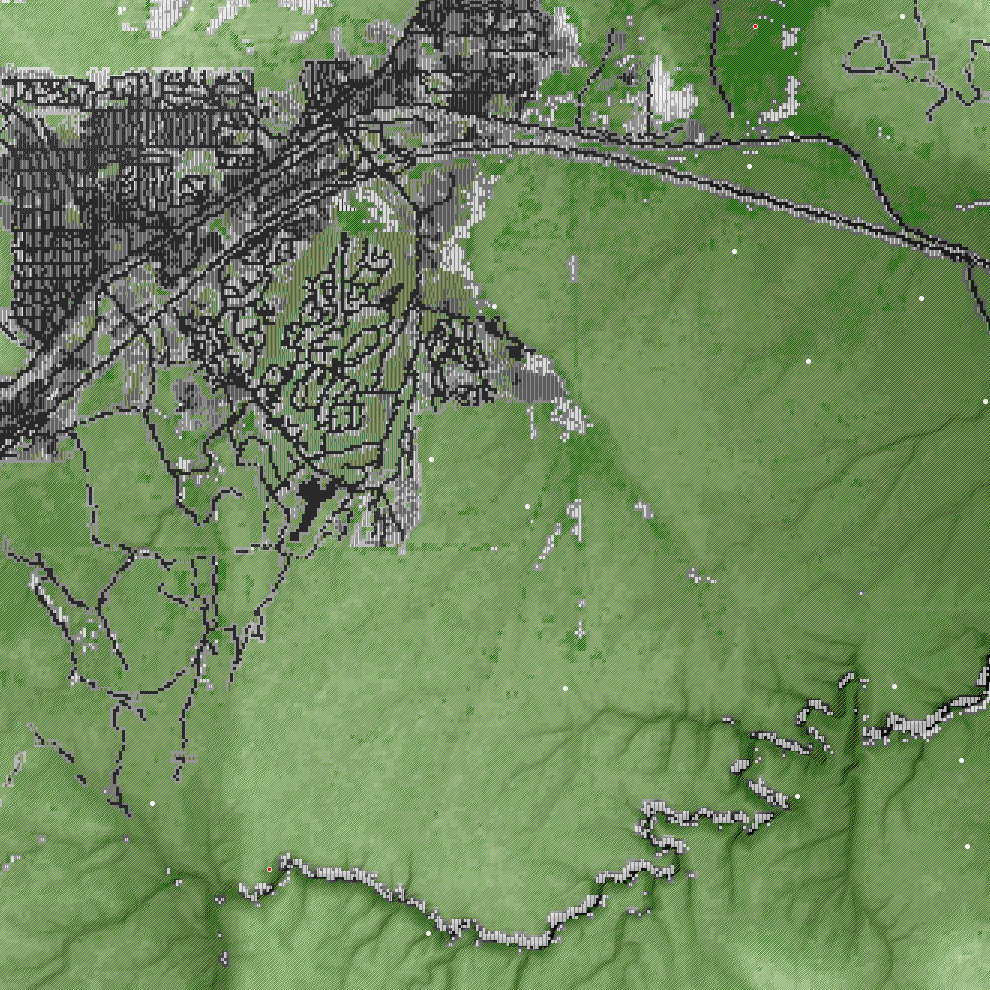I'm an interdisciplinary designer working at the intersection of society, technology and the built environment.
Futurescape
Using interactive agent-based simulation to understand and communicate the complexity of fire-prone ecosystems.
CHALLENGE
Communicate the risk of wildfire and methods for mitigation, in complex natural and urban ecosystems.
PROJECT
PROJECT
Futurescape, an interactive simulation that allows a user to explore intelligent tree harvesting sites and holistic cattle grazing ranches as a means of balancing tree and grass growth while reducing wildfire risk for nearby developed urban areas.
DETAILS
Harvard Graduate School of Design (GSD)
Mapping II: Geosimulation
Robert Pietrusko, instructor
Mapping II: Geosimulation
Robert Pietrusko, instructor
Fall 2017
AFTER
AFTER
Received Howard T. Fisher Prize, from the Harvard GSD and Center for Geospatial Analysis (CGA).
Poster exhibited at the Association for Fire Ecology’s 7th International Fire Congress in 2017.
Poster exhibited at the Association for Fire Ecology’s 7th International Fire Congress in 2017.
︎

Futurescape is an interactive simulation that promotes an understanding of our relationship to a vulnerable and dynamic ecosystem in decline.
The simulation imagines a new ecology for the high desert forests near Flagstaff, Arizona. In Futurescape, the current fire regime — defined by frequent severe wildfires across the high density, low homogeneity Ponderosa Pine forests — is dynamically changed by the addition of smart harvesting landings in the forest and holistic grazing ranches on the grassland. Within the simulation, correct utilization of these strategies together can help to put two natural systems into healthy competition.
Futurescape is written in Processing, with code available here.The simulation integrates GIS and other real-world data for topography, ground cover, soil conditions, hydrology and lighting frequency; it simulates with a combined cellular automata and agent-based model. Model performance and behavior was calibrated to match the system dynamics of the site, mapped through stock-and-flow casual loop diagrams.
The simulation imagines a new ecology for the high desert forests near Flagstaff, Arizona. In Futurescape, the current fire regime — defined by frequent severe wildfires across the high density, low homogeneity Ponderosa Pine forests — is dynamically changed by the addition of smart harvesting landings in the forest and holistic grazing ranches on the grassland. Within the simulation, correct utilization of these strategies together can help to put two natural systems into healthy competition.
Futurescape is written in Processing, with code available here.The simulation integrates GIS and other real-world data for topography, ground cover, soil conditions, hydrology and lighting frequency; it simulates with a combined cellular automata and agent-based model. Model performance and behavior was calibrated to match the system dynamics of the site, mapped through stock-and-flow casual loop diagrams.
︎
Getting to know a complex ecosystem
Our project built on Oliver’s extensive knowledge of the site and ecosystem. The high density, low homogeneity Ponderosa Pine forests around Flagstaff, Arizona are prone to increasingly severe wildfires. Although fire is part of any forest ecosystem, changing climates and efforts to prevent all fire from occurring have made the current ecosystem particularly vulnerable, threatening the forest and nearby cities.Mapping the system
How might we build a tool to explore and communicate a series of interrelated natural and human systems?We started to map out the ecosystem in a series of causal loop diagrams. We conceived of the system as a relationship between trees, grass and the human activities of tree harvesting and cattle grazing. Understanding the relationships between these elements would serve as the foundation of the tool and simulation.
Mapping a complex, dynamic system takes a lot of iterations! We worked through a variety of sketches, checking each version against our observations — while also thinking ahead to how we might want to use the system in our end product.




Building a surface and simulation
With a clearer understanding of the system, we built an agent-based and cellular automata simulation that incorporated real-world GIS and meteorological data as well as models of cattle grazing, forest harvesting and ecosystem dynamics. Assembling a good model required computing a climactic water deficit surface, a conceptual data layer that capture the relative “dryness” of the terrain over time.The simulation’s appearance was designed to render a depth of information as a simple 2D visualization. A range of hatch patterns conveyed varying stages of vegetation growth and composition; alternate views allow a user to understand fuel loading, biomass and moisture content of the observed area.



Making it useful
The simulation and project have received positive feedback from experts and stakeholders. We hope to develop it into a more fully-formed community engagement tool to help educate home- and land-owners about the need for comprehensive fire mitigation strategies. As an example of rual civic tech, we hope that the right digital tools can help reduce the risk of future fires.